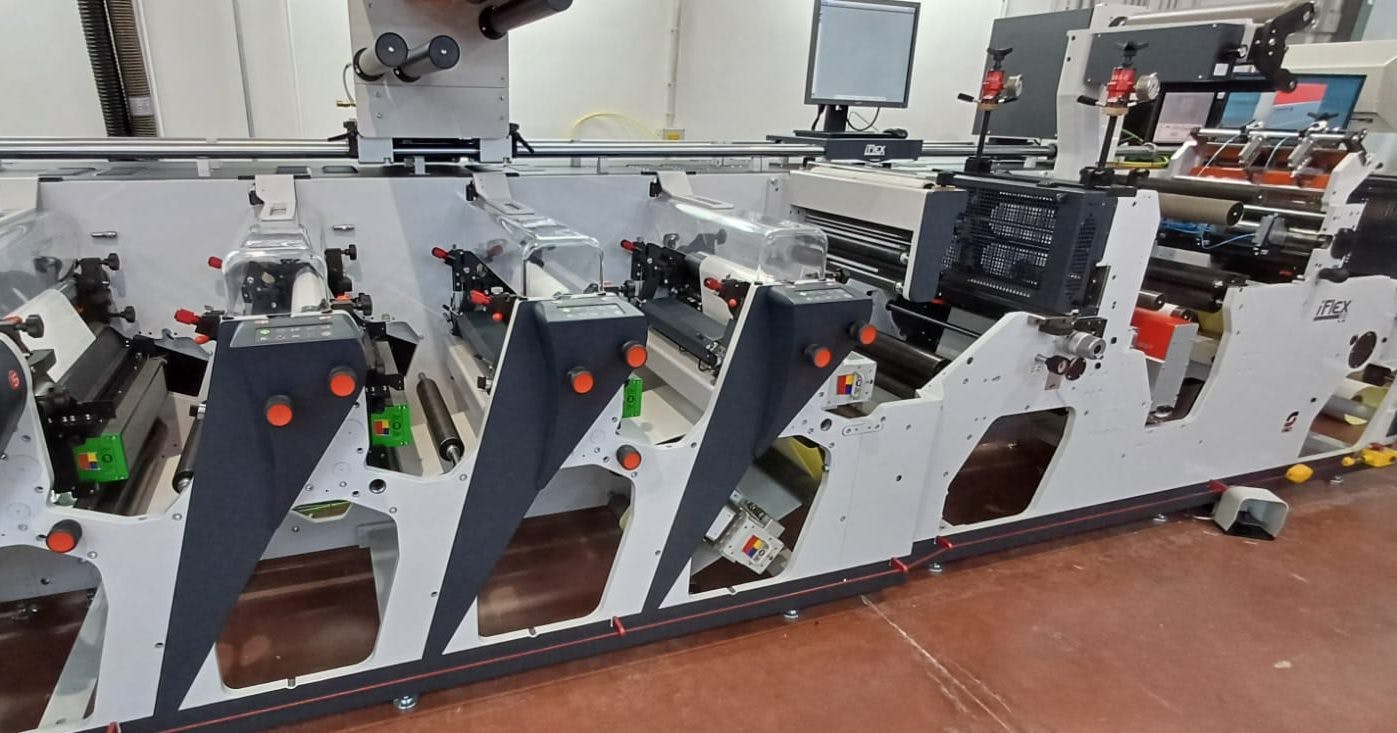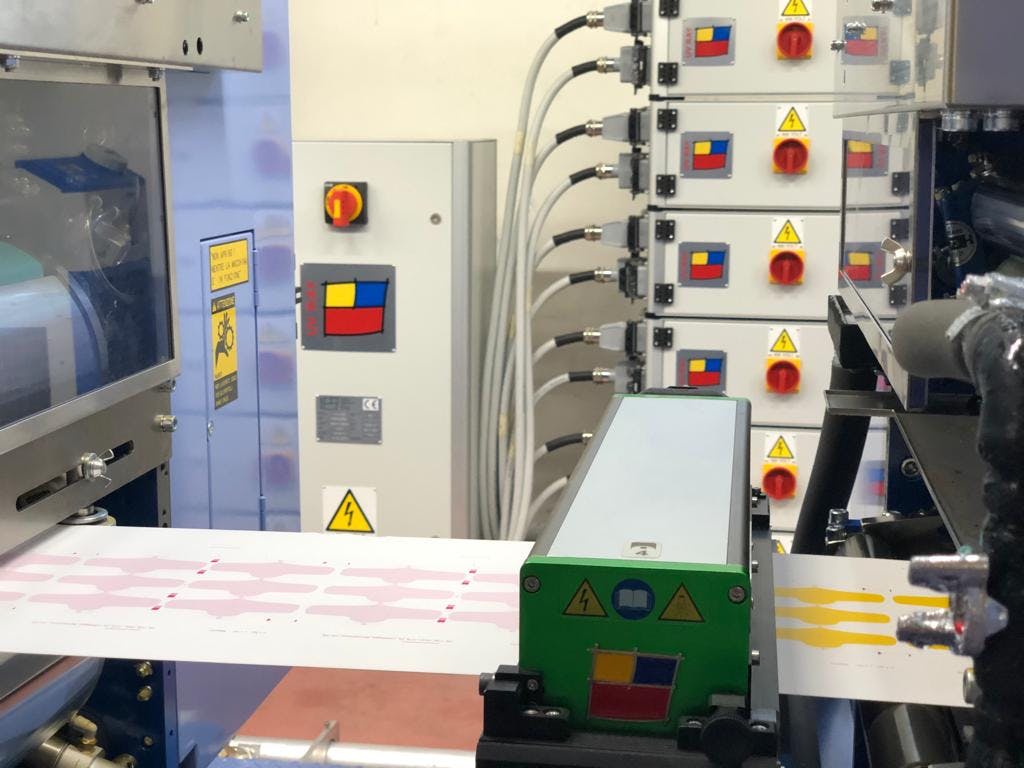Grafiche Quartana chooses the "cool" UV Ray LED

[Original article from MetaPrintArt translated into English]
With 40 employees, 2,000 square meters facility for the production of high-quality labels for the food, wine and cosmetic sectors, the Matera-based company has chosen curing with UV Ray's water-cooled UV LED lamps.
We meet Marco Quartana who briefly traces the history of how and when Grafiche Quartana of Matera was born.
"Towards the end of the 1980s," he explains, "my father Michele Quartana had started a business for the adhesive tape industry. Shortly with the help of his three children, Grazia, Marco and Carolina, from whose acronym the company name Giemmeci was born, it was decided to take the first step forward: not only to sell adhesive tape, but also to print it."
It is a generational change that allows for an expansion of the business, even though at that time adhesive tape printing did not yet allow for high print quality work. So it is that the new generation pays attention to the evolution of printing technologies for continuous form and, consequently, roll labels.
But it would take a few years—we are now in the mid-1990s—when the first narrow web presses and semi-rotary presses made it possible to achieve acceptable quality for label printing. It is during these years that the activity of this small family business gains momentum by carefully following new technologies and making new purchases every two to three years.
End-to-end labels
If this is history, today the company can rightly boast the title of Graphical Arts, with highly respectable printing quality, specializing in high-end self-adhesive labels from cosmetics to wine labels.
So let's see how Grafiche Quartana is organized today, with which and how many printing presses it operates. Although it remains a family business it boasts 40 employees, a production plant of 2000 square meters of which 300 square meters are dedicated to offices which include all graphic design and prepress activity.
We also see that the company is ISO 9001, BRC and FSC certified, which guarantees the entire paper supply chain, from the forest to the paper mill. In addition, 70 percent of its electricity is produced from solar panels, an area in which we know Basilicata is at the forefront.
Returning to the types of labels printed, Quartana lists for us the sectors in which they operate: 40 percent of the production is in the agri-food industries and another 40 percent in the wine and spirits industry. The remaining 20 percent is in the cosmetics and chemical sectors—in all cases in the medium-high quality range.
Importance of cooling
Among the most recently installed machines we see Omet's iFlex label press, with ink drying systems and UV coatings with LEDs.
"We mounted LED curing systems on all the machines," says Marco Quartana, "in line with the principle of energy saving, but also for their reliability. In particular, we chose to mount UV Ray lamps from the beginning."
Why this choice?
"We found in UV Ray a very streamlined company with a very technical product that reflects the customer's requirements to the point of providing a customized product when necessary. In our case, the system fits well with the high performance of iFlex, which is among the most advanced in the industry. It is in fact a 360-format, 8-color flexo with a reversing bar, cold foil and inline die-cutting with rotary cylinders with 100% Omet manufactured accessories, which we installed in July 2023."
Alberto Maiano of UV Ray explains the advantages of installing UV LED on an Omet iFlex 8-color press.
"Water-cooled LED technology is well suited to Omet's single-pass flexo presses. Combined with the print quality of the iFlex, it allows for the best results in every respect: especially register accuracy even when printing on sensitive and difficult materials such as thermal paper or plastic films such as clear-on-clear. And, as we know there is no heating of the press or its parts, including the die that collects all the material temperature at the end of the press. And, last but not least, the ease and repeatability of jobs due to the almost total absence of loss of LED start-up time."
Water for constant temperature
We know that today the major manufacturers of LED drying systems prefer water cooling. Alberto Maiano, what is the reason?
"Water cooling turns out to be essential for each of the items I mentioned earlier, as it allows the contrast of the material to always be at a constant temperature throughout the day and keeps the LED in perfect working order. Recall that since the LED is a critical electronic component, it bases all its effectiveness on very little thermal control. This is why we have carefully chosen the construction materials of our LEDs, precisely to achieve the highest possible dissipation thus achieving a very high efficiency."
